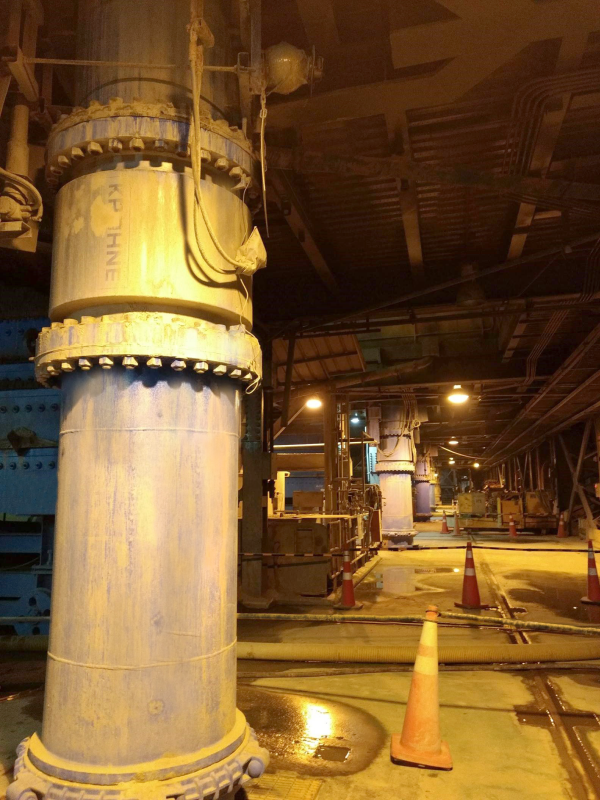
Hydrocyclones are the most widely used type of classifier for separating slurry particles based on particle weight. Their performance is considered critical to comminution efficiency and the profitability of the whole processing plant. Bespoke electromagnetic flowmeters for the mining industry can help plant operators optimise cyclone performance and maximise throughput in accordance with their classification targets.

Mag meters with a track record in hydrocyclone feedline applications combine abrasion resistance, high accuracy and repeatability for long-term stable flow measurement of slurry feedlines. Meter design and use of wetted materials are paramount when it comes to increasing plant uptime and reducing maintenance costs, as the following application report demonstrates.
The scenario
A large gold and copper facility operates four hydrocyclones. The value that the total gold production throughput of the four hydrocyclone feedlines was initially designed for is approximately $3 million per day. In each hydrocyclone feedline, one electromagnetic flowmeter is installed. One of the main selection criteria for flowmeters was minimal maintenance with high measurement integrity over a long period of time.
Coarse and fine materials cause major abrasive wear. The maintenance costs of the flow control are driven by the costs of replacing a flowmeter. This not only involves the acquisition price of a new meter, but also includes production downtime, manpower, crane time and the flanging and installation of new flowmeters. Secondly, maintenance costs are driven by the frequency of replacements. The use of inappropriate materials can lead to a meter replacement frequency of three to six months per line. At best, a six-month replacement frequency will cost the facility $450 000 per line per year in production losses and $50 000 for meter replacement per line per year.
Through appropriate material selection and application engineering, KROHNE has been able to change the replacement frequency of the electromagnetic flowmeters from every six months to every three years. The electromagnetic flowmeter of choice is the Optiflux 4300. Its meter design and liner provide the necessary toughness and versatility to maximise instrument lifetime in the cyclone feedlines, while the rugged polyurethane liner of the mag meter has excellent abrasion resistance.

The flush-mounted Hastelloy C electrodes create less obstruction in the flow and are therefore less prone to wear and noise. The electrodes have a carbide coating which is extremely durable, ensuring an extended lifetime. The inner diameter of the flowmeter precisely matches the inner diameter of the connected process pipes since, in abrasive applications, even the smallest difference in inner diameter can accelerate wear.
The final measure taken is the installation of Type 3 protection rings on the inlet of the flowmeter, to prevent a difference in the inner bore. The signal converter of the flowmeter offers intelligent noise filtering techniques, while its integrated process diagnostic functions can be used for appropriate parameter settings and provide information on the status of the sensor, the converter and the process.
The bottom line
Using the KROHNE flowmeter has led to a significant reduction in maintenance costs and an increase in plant uptime for the customer and smart material selection has enabled a significant meter lifetime extension from six months to three years. In this way, KROHNE has been able to save the facility $1,5 million per line every three years.
For more information contact KROHNE SA, +27 11 314 1391, [email protected], www.za.krohne.com
| Tel: | +27 11 314 1391 |
| Email: | [email protected] |
| www: | www.za.krohne.com |
| Articles: | More information and articles about KROHNE |

© Technews Publishing (Pty) Ltd | All Rights Reserved